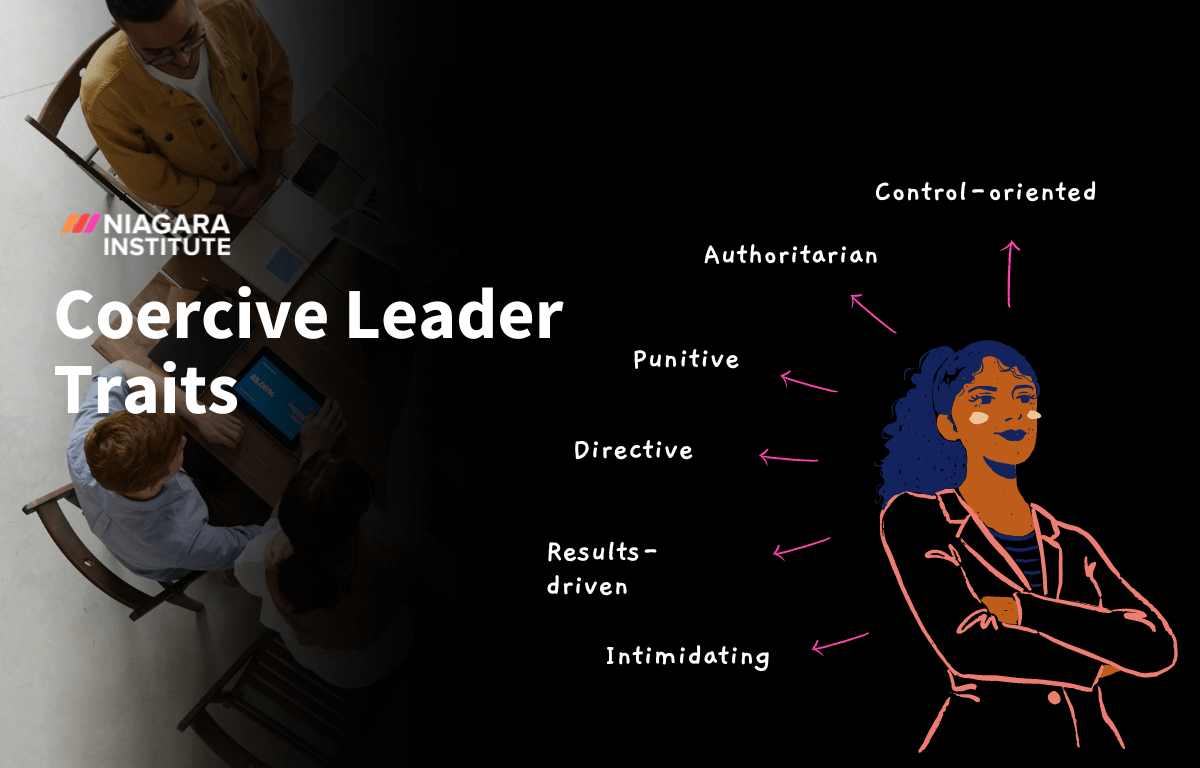10 min read
What Is Referent Power In Leadership? Quiz
Have you ever noticed how some people just have that magnetic pull?

There are many types of power that can be used in the workplace by managers, supervisors, or anyone in a position of responsibility.
Some power comes from charisma, known as charismatic leadership, whereas another type comes from likability, known as referent power.
There’s also a power skill that you may have encountered: where an individual uses his authority and influence over subordinates.
This is called coercive power.
Jump to:
In leadership, coercive power is the ability of a leader to get people to do what they want by threatening them with negative consequences.
Like autocratic leadership style, a coercive leader often uses strict rules and consequences to control behavior among team members. However, too much coercive power can lead to a negative and stressful work environment, often resulting in a toxic boss scenario where employees feel constantly threatened, demoralized, and demotivated.
A leader can use a coercive management style where immediate compliance is necessary, such as in crisis management or when safety is at risk.
It is often contrasted with other forms of power, such as reward power, legitimate power, expert power, and referent power, which are based on positive incentives, formal authority, specialised knowledge, and personal attractiveness or charisma, respectively.
We should note that there is a difference between boss and leader: a boss uses formal authority, while leaders create an environment where they balance authority and empathy, mix leadership styles, and don’t need to resort to any tactics to get people to follow them.

In certain situations, coercive leaders can use their position, formal authority, and role in the company to achieve desired outcomes.
For instance, a sales manager can use coercive power for performance empowerment. He/she can warn underperforming sales staff about demotion or termination if they do not meet their sales targets within a specified period.
Or, for crisis management, people leaders can use a coercive approach in the workplace to control the situation. For example, he/she can demand immediate action to command the team.
Likewise, a project manager can also use coercive management style, using fear of job loss to ensure timely completion of given tasks to reduce the number of missed deadlines.
Though in some situations using coercive tactics are favourable, like in crisis situations where immediate action is required, the constant use of coercive management style can have negative effects in the workplace.
For example, coercive leadership often undermines self-leadership among employees, as it discourages autonomy and self-driven decision-making.
Or, take this example: the excessive use of coercive power can decrease the team happiness. This can lead to high turnover rates as employees may leave the organisation in search of a more positive work environment.
When a coercive leader uses threats or punishment, employees can become unhappy and stressed. Also, coercive leadership can lead to a toxic work environment, where it may discourage employees to stand up for themselves.
Having and exercising coercive power is not inherently bad; however, it should be balanced to achieve positive and desired outcomes. Balancing coercive power with other forms of influence can lead to more positive outcomes and a healthier work environment.
If you find yourself frequently using coercive power in your leadership role, it may be time to reflect on your management style and consider improving your leadership skills.
Discover your leadership style by taking this quiz, and learn how to refine and enhance your management techniques based on your results.

10 min read
Have you ever noticed how some people just have that magnetic pull?

9 min read
Have you ever worked in a team where you can’t keep it together because there’s no order? Where team dynamics and leadership are lacking, and there’s...

4 min read
In the organizational context, reward power is one of the key types of power that leaders and managers can use to influence and motivate their team...